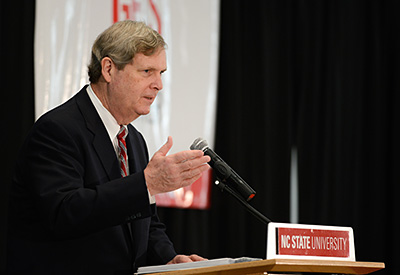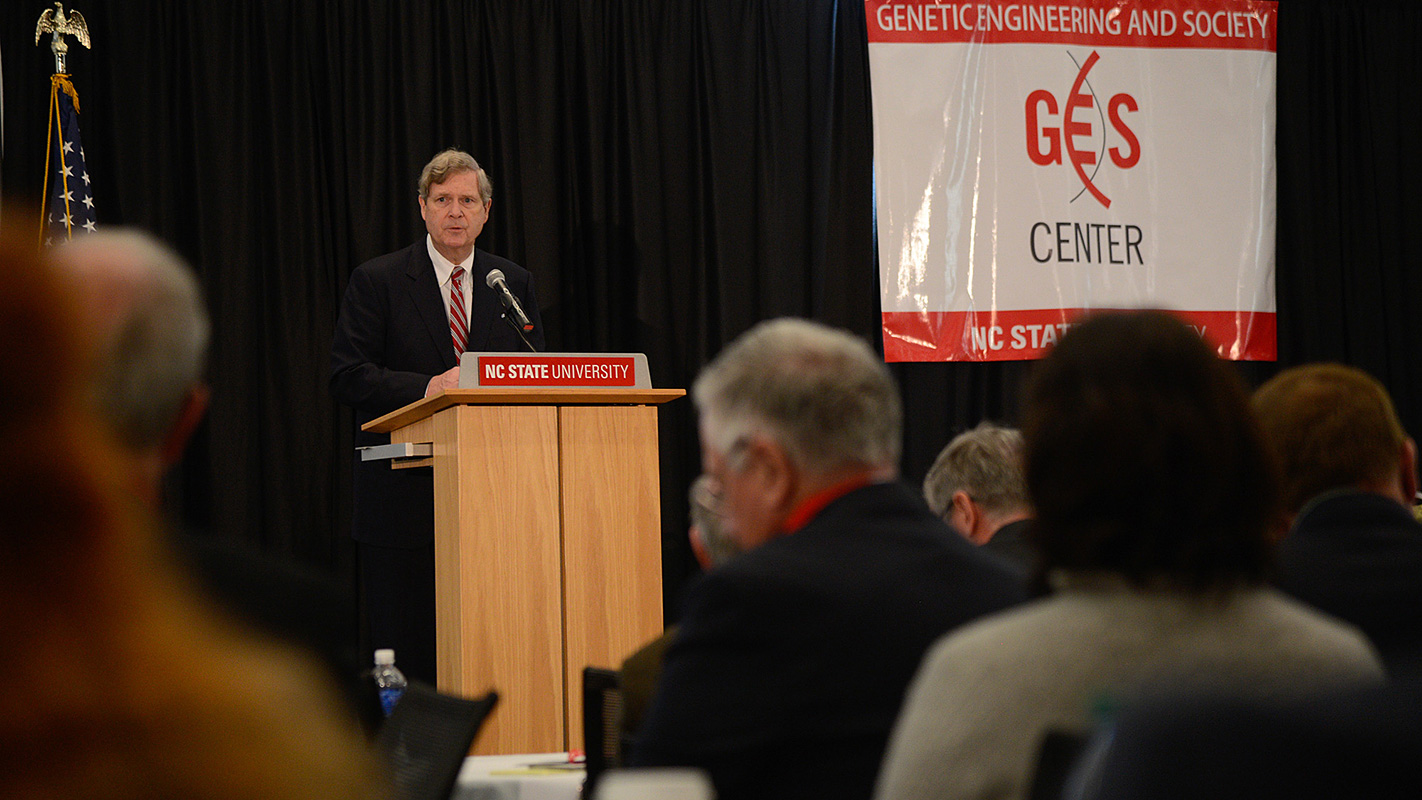U.S. Secretary of Agriculture Tom Vilsack took the stage at the Hunt Library last week to urge a more respectful dialogue between those who support the production of genetically engineering crops and those who support organic crop production and non-genetically modified foods.
Both approaches were represented at the event, the Stakeholders’ Workshop on Coexistence, hosted by NC State’s Genetic Engineering and Society Center. The workshop’s ambitious goal was to come up with approaches that would make coexistence of these two forms of agriculture in the United States less problematic.
Passionate Voices
The exchange between two passionate factions of the agriculture and food industry comes at a time when consumer interest in food production is high, and there is increased awareness of the need to feed a world population of 9 billion by 2050. The need for the workshop was identified by the USDA’s Advisory Committee of Biotechnology and 21st Century Agriculture, known as AC21.
The two-day workshop packed a lot of action into a tight schedule. Thursday’s agenda included individual presentations and panel discussions, while Friday’s schedule allowed for small-group sessions on a variety of issues related to achieving more harmonious coexistence.
Entomologist Fred Gould said the USDA’s selection of NC State as the site for the workshop helped raise the profile of the university’s interdisciplinary Genetic Engineering and Society Center. Gould co-directs the center with Jennifer Kuzma, a professor of public and international affairs.
Focus on the Consumer

In opening remarks, Vilsack said it is important for all sides of the coexistence issue to reach consensus in order to preserve consumer confidence in farming and agriculture.
“We’re here because we all care very deeply about the future of farming and agriculture in this country,” he said. “We are responsible to consumers here and billions around the world. We have a responsibility to protect the environment and rural communities. In short, we have a responsibility to enhance and expand opportunities in agriculture.”
While there are a variety of opinions on coexistence and product choice, Vilsack said, “In my view, both sides have failed to speak in a way that advances this cause. And the failure to do so may impact consumer confidence in farming and food.”
Past attempts at dialogue on coexistence, Vilsack said, “have devolved back into bitter rhetoric. And what has it achieved? Little in the way of progress. In-fighting in agriculture has impacted consumer confidence in genetically engineered products, which could increase the cost of product development and deprive consumers of choices.”
Products Are Safe
Vilsack pledged to support an open dialogue that recognizes the needs of all stakeholders.
“Each of you has skin in this game. How can USDA make coexistence more possible? We want to support all farmers – to provide them with the tools they need to succeed.
“USDA’s perspective is that GE [genetically engineered] products on the shelf today are safe. Approved GE crops are important for many farmers. Those who wish to produce valuable organic products and identity-preserved products are also important. They want more active collaboration with their GE neighbors. These are some core challenges that farmers face.”
Gould said that during the Friday meeting, participants worked in small groups, providing feedback on a number of current and proposed USDA programs related to coexistence.
“The question is where do all the groups go now that we have left the table?” Gould said. “We were not there to discuss which [type of agriculture] is better, but how do we come up with a new system that makes sense for everyone?”
USDA is accepting comments on coexistence through April 10. Visit the workshop website for more information.
- Categories:



